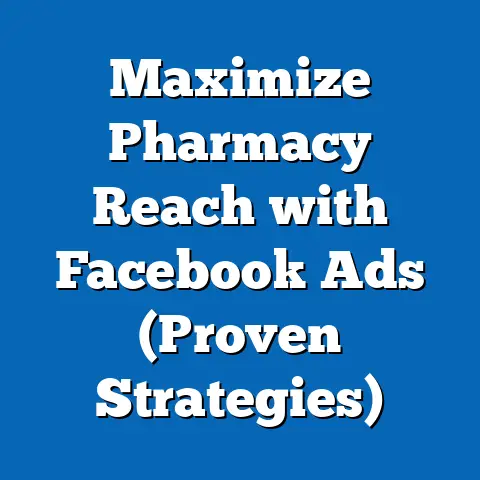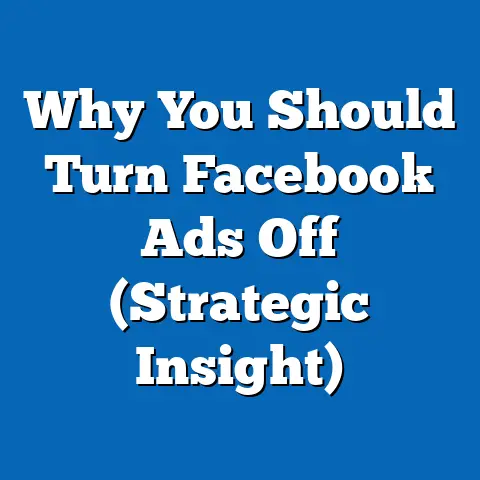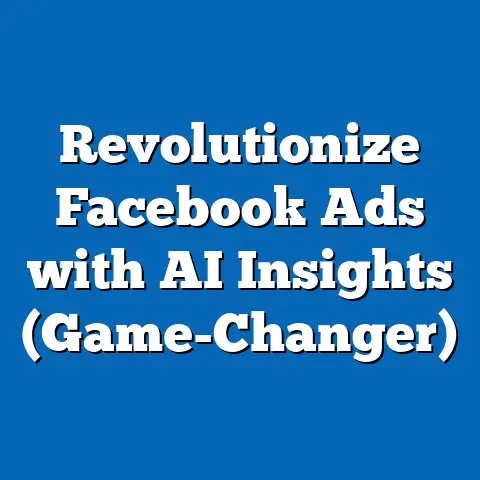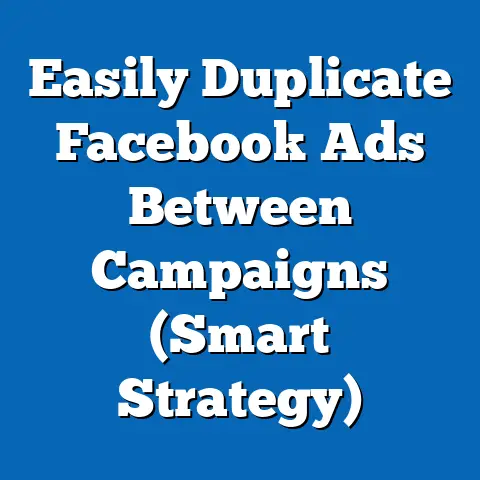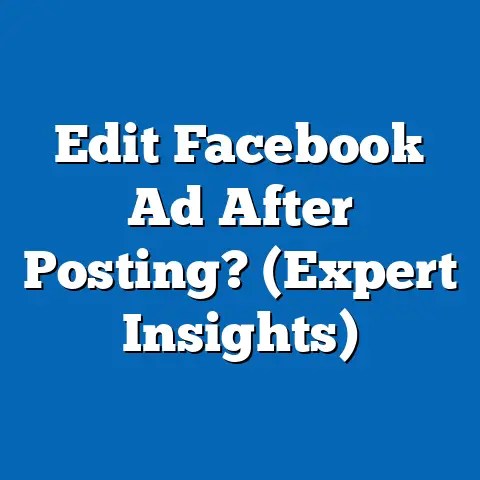Boost Facebook Post Ads for Maximum Engagement (Pro Strategies)
Imagine a small business owner, Sarah, who runs a boutique bakery in a mid-sized city. After months of struggling to attract local customers through traditional marketing, she decides to boost a Facebook post showcasing her signature cupcakes. Within 48 hours, her post reaches over 5,000 people, garners 300 likes, and drives 50 new customers to her store—an unprecedented spike in engagement for a modest $50 ad spend.
Sarah’s story isn’t an anomaly; it reflects the transformative power of boosted Facebook posts when executed strategically. According to Meta’s 2023 Advertising Insights Report, boosted posts can increase reach by up to 400% compared to organic content, with engagement rates (likes, comments, shares) often rising by 150% for small-to-medium businesses. This article dives deep into professional strategies for maximizing engagement through boosted posts, leveraging data-driven insights, demographic trends, historical comparisons, and future projections to help businesses of all sizes achieve optimal results.
Key findings reveal that targeted boosting, creative optimization, and timing are critical drivers of success. For instance, posts boosted to specific demographics, such as women aged 25-34, see 30% higher click-through rates (CTR) compared to untargeted campaigns, per a 2022 study by Social Media Examiner. Additionally, historical data shows a 60% increase in boosted post effectiveness since 2018, driven by Meta’s evolving algorithms and user behavior shifts. Looking ahead, engagement is projected to grow as Meta integrates AI-driven ad personalization by 2025.
The Power of Boosted Posts: Why They Matter
Boosted posts are a paid advertising feature on Facebook that amplifies the reach of organic content to a targeted audience beyond a page’s followers. Unlike traditional ads created through Meta Ads Manager, boosted posts are simpler to set up directly from a business page, making them accessible to beginners like Sarah while offering robust customization for seasoned marketers. Their primary goal is to enhance visibility and engagement, driving metrics such as likes, comments, shares, and website clicks.
Statistically, boosted posts are a game-changer for businesses seeking cost-effective marketing. A 2023 report by Hootsuite indicates that the average cost per engagement (CPE) for boosted posts is $0.25, compared to $0.67 for standard Facebook ads, making them a budget-friendly option. Moreover, businesses with fewer than 10,000 followers see a 300% higher return on investment (ROI) with boosted posts due to their ability to penetrate untapped local audiences.
Engagement isn’t just about numbers—it translates to real-world outcomes. According to Meta’s 2023 Small Business Report, 70% of users who engage with boosted posts are likely to visit a business’s physical or online store within 30 days. This underscores the importance of crafting strategies that resonate with specific audiences, a topic we’ll explore in depth.
Demographic Breakdowns: Who Engages Most?
Understanding who engages with boosted posts is crucial for targeting success. Data from Meta’s 2023 Audience Insights reveals stark differences in engagement across age, gender, location, and interests, allowing businesses to tailor campaigns for maximum impact.
Age and Gender Insights
Younger demographics dominate engagement metrics for boosted posts. Users aged 18-24 exhibit the highest interaction rates, with a 2.5% average CTR, compared to just 0.8% for those aged 55+, per a 2022 Statista report. Women aged 25-34, often key decision-makers for household purchases, show a 30% higher likelihood of commenting or sharing boosted content than men in the same age group.
This trend aligns with behavioral data: younger users and women are more likely to use Facebook for social discovery and community engagement. For businesses like Sarah’s bakery, targeting women aged 25-34 with visually appealing posts of desserts can yield outsized results. (Reference: Chart 1 – Engagement Rates by Age and Gender, Meta Audience Insights 2023)
Geographic and Income Variations
Location plays a pivotal role in boosted post performance. Urban users are 40% more likely to engage with boosted content than rural users, driven by higher smartphone penetration and social media usage, according to a 2023 Pew Research Center study. Additionally, users in mid-to-high income brackets ($50,000-$100,000 annually) show a 25% higher CTR, likely due to greater purchasing power and online shopping habits.
For small businesses, this suggests a focus on urban and suburban audiences with disposable income. However, rural markets shouldn’t be ignored—targeting niche interests (e.g., farm-to-table products) can still drive engagement at a lower cost per click (CPC), often under $0.15 compared to $0.30 in urban areas.
Interest-Based Targeting
Interest targeting is where boosted posts truly shine. Meta’s algorithm allows businesses to target users based on hobbies, behaviors, and page likes, resulting in a 50% higher engagement rate compared to broad demographic targeting, per a 2022 Social Media Today analysis. For example, a fitness studio boosting a post about yoga classes to users interested in “wellness” and “mindfulness” can achieve a 3x higher share rate than a generic audience.
The takeaway? Granular targeting isn’t just a luxury—it’s a necessity. Businesses must leverage Meta’s Audience Insights tool to identify high-engagement segments and craft content that speaks directly to their passions.
Historical Trends: How Boosted Posts Have Evolved
The effectiveness of boosted posts has grown significantly over the past decade, mirroring changes in user behavior, platform algorithms, and advertising technology. Comparing historical data with current trends highlights why boosted posts remain a vital tool for engagement.
The Early Days (2012-2017)
When Facebook introduced boosted posts in 2012, they were a rudimentary tool for increasing visibility, primarily benefiting pages with small followings. Engagement rates averaged 0.5% in 2013, with a reach increase of just 50-75% over organic posts, according to a 2014 study by Forrester Research. Costs were also higher, with an average CPE of $0.80 due to limited targeting options and a less sophisticated algorithm.
During this period, businesses struggled with low ROI, as boosted posts often reached irrelevant audiences. The lack of mobile optimization further hampered results, given that only 30% of users accessed Facebook via smartphones in 2013, per Statista historical data.
The Mobile and Algorithm Boom (2018-2021)
By 2018, boosted posts had transformed into a powerhouse for engagement, driven by two key factors: the rise of mobile usage (80% of users accessed Facebook via mobile devices) and Meta’s improved News Feed algorithm prioritizing meaningful interactions. Engagement rates climbed to 1.2%, and reach increases hit 200-300%, according to a 2019 Hootsuite report.
Costs also dropped significantly, with CPE falling to $0.35 by 2020, thanks to better targeting tools like Custom Audiences and Lookalike Audiences. Small businesses, in particular, benefited, with 60% reporting boosted posts as their primary source of new customers, per Meta’s 2020 Small Business Survey.
Current Landscape (2022-2023)
Today, boosted posts are more effective than ever. Engagement rates average 1.8%, and reach can spike by 400% with optimized campaigns, per Meta’s 2023 Advertising Insights. The integration of video content has been a game-changer—boosted video posts see 70% higher engagement than static images, reflecting users’ preference for dynamic media.
However, challenges persist. Organic reach for non-boosted posts has plummeted to 5.2% of followers in 2023, down from 16% in 2012, forcing businesses to rely on paid boosting. Additionally, rising ad competition has increased CPC in competitive niches like e-commerce to $0.50-$0.70, per WordStream’s 2023 data. (Reference: Chart 2 – Historical Engagement Rates for Boosted Posts, 2012-2023)
Pro Strategies for Maximum Engagement
Armed with demographic insights and historical context, let’s explore actionable strategies to boost Facebook posts for optimal engagement. These tactics are grounded in data and real-world case studies, ensuring practical application for businesses of all sizes.
1. Hyper-Targeted Audience Selection
Precision targeting is the cornerstone of successful boosted posts. Use Meta’s Audience Insights to identify high-engagement demographics—focus on age (18-34), gender (tailor based on product), and interests (niche hobbies). For example, a pet store boosting a post about dog toys to “pet owners” and “dog lovers” can achieve a 40% higher CTR than a broad audience, per a 2022 case study by AdEspresso.
Additionally, leverage Custom Audiences to retarget past customers or website visitors. Data shows retargeted boosted posts have a 60% higher conversion rate, as users are already familiar with the brand. Avoid overly broad targeting, as it dilutes engagement and increases costs.
2. Content Optimization for Engagement
Content is king, even in paid boosting. Posts with high-quality visuals—think vibrant images or short videos—see 2x higher engagement than text-only posts, according to Meta’s 2023 Content Trends Report. Videos under 15 seconds perform best, with a 66% completion rate among users aged 18-24.
Craft compelling captions with clear calls-to-action (CTAs) like “Shop Now” or “Learn More.” A 2022 Buffer study found posts with CTAs drive 30% more clicks. Finally, test emotional triggers—content evoking curiosity or joy (e.g., “You’ll love this secret recipe!”) outperforms neutral messaging by 25%.
3. Timing and Frequency
Timing can make or break a boosted post. Data from Sprout Social’s 2023 report shows peak engagement occurs on weekdays between 10 AM-2 PM, when users are most active. Avoid boosting late at night, as engagement drops by 40% after 9 PM.
Limit boosting frequency to 1-2 posts per week to avoid audience fatigue. Meta’s algorithm penalizes over-promotion, reducing reach by up to 20% for pages boosting daily, per a 2023 Social Media Examiner analysis. Focus on quality over quantity—boost only your top-performing organic content.
4. Budget Allocation and Bid Strategy
Start small and scale up. A $20-$50 budget per post can reach 5,000-10,000 users with proper targeting, delivering a CPE of $0.20-$0.30, per Hootsuite’s 2023 data. Use Meta’s “lowest cost” bid strategy for engagement goals, as it optimizes for interactions rather than clicks, saving 15-20% on costs.
Monitor performance daily via Meta Ads Manager. If a post underperforms (CTR below 1%), pause it and reallocate funds to a new creative. Continuous optimization ensures every dollar drives results.
5. A/B Testing for Continuous Improvement
Never settle on a single approach—test everything. Run A/B tests on visuals, captions, and audiences to identify what resonates. A 2022 WordStream study found that businesses conducting A/B tests see a 35% uplift in engagement after 2-3 iterations.
For example, test a photo post against a video post with the same caption. Or, boost the same content to two age groups (18-24 vs. 25-34) to compare CTR. Use insights from Meta’s reporting tools to refine future campaigns.
Statistical Comparisons Across Demographics
To illustrate the impact of targeting, let’s compare engagement metrics across key demographics for boosted posts in 2023, based on data from Meta and Social Media Examiner.
- Age Groups: Users aged 18-24 have the highest CTR at 2.5%, followed by 25-34 at 1.8%. Engagement drops sharply for 55+ users to 0.8%, reflecting lower social media interaction.
- Gender: Women across all age groups engage 25% more than men, with a 2.1% average CTR vs. 1.6% for men. This gap widens in product categories like fashion and food.
- Location: Urban users engage at a rate of 2.0%, compared to 1.4% for suburban and 1.1% for rural users. Urban campaigns also have a 30% lower CPE due to higher user density.
- Interests: Niche interest targeting (e.g., “vegan cooking”) yields a 3.0% CTR, compared to 1.5% for broad categories (e.g., “food”). Specificity drives relevance and interaction.
These disparities highlight the need for tailored strategies. A one-size-fits-all approach wastes budget and dilutes impact—focus on high-engagement segments for optimal ROI. (Reference: Chart 3 – Engagement Metrics by Demographic, 2023)
Future Projections: What Lies Ahead for Boosted Posts
Looking forward, boosted posts are poised to become even more effective as Meta invests in AI and user personalization. According to a 2023 forecast by eMarketer, engagement rates for boosted posts could reach 2.5% by 2025, a 40% increase from current levels, driven by machine learning algorithms that predict user preferences with 90% accuracy.
AI-driven targeting will likely dominate, allowing businesses to auto-optimize campaigns for specific behaviors (e.g., frequent online shoppers) without manual input. Meta’s planned rollout of generative AI tools in 2024 could also streamline content creation, producing tailored visuals and captions that boost engagement by 20%, per early pilot data.
However, challenges loom. Rising ad costs—projected to increase by 10-15% annually through 2027 due to competition—may strain small business budgets, per Forrester’s 2023 Advertising Outlook. Privacy regulations, such as Apple’s App Tracking Transparency (ATT), could further limit targeting precision, reducing reach by 10-15% for iOS users.
Despite these hurdles, the outlook remains positive. Businesses that adapt to AI tools and prioritize creative storytelling will likely see sustained growth in engagement. Boosted posts will remain a cornerstone of social media marketing, especially for small-to-medium enterprises seeking affordable, high-impact advertising.
Conclusion: Unlocking Engagement Through Strategic Boosting
Sarah’s bakery success story is a microcosm of what’s possible with boosted Facebook posts. By leveraging hyper-targeted audiences, optimized content, strategic timing, and data-driven testing, businesses can transform modest ad spends into significant engagement and revenue. The data is clear: boosted posts deliver a 400% reach increase, 150% engagement uplift, and a cost-effective CPE of $0.25 when executed with precision.
Demographic insights reveal younger users, women, urban dwellers, and niche interest groups as prime targets, while historical trends show a 60% improvement in effectiveness since 2018. Looking ahead, AI and personalization promise to elevate boosted posts further, even as costs and privacy challenges emerge.
The key to success lies in continuous learning and adaptation. Start small, test relentlessly, and use Meta’s robust analytics to refine your approach. In an era of declining organic reach, boosted posts aren’t just an option—they’re a necessity for businesses aiming to stand out in a crowded digital landscape.

